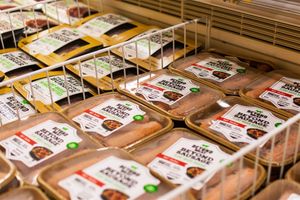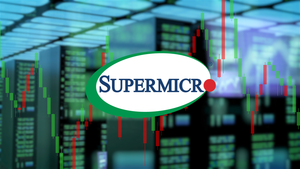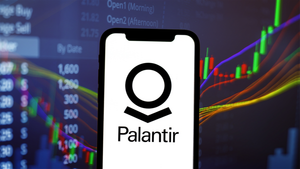
Chipotle Mexican Grill (NYSE: CMG) reported a mixed bag of financial results for the second quarter of 2025, revealing a 3% increase in total revenue but a concerning 4% drop in comparable restaurant sales. The popular fast-casual chain saw its stock tumble by over 10% in after-hours trading immediately following the announcement, reflecting investor anxieties over slowing customer traffic and the broader economic climate impacting consumer spending. This performance has prompted a revised outlook for the full year, indicating a cautious stance from management amidst ongoing market volatility.
While new restaurant openings, particularly those featuring the efficient Chipotlane drive-thrus, bolstered overall revenue, the decline in transactions suggests a tougher environment for existing locations. The company also grappled with increased marketing and labor costs, which compressed operating margins, even as digital sales continued to represent a significant portion of its business. These results highlight the delicate balance Chipotle must strike between expansion, operational efficiency, and attracting customers in a competitive and economically uncertain landscape.
Chipotle's Q2 Rollercoaster: Growth Offset by Customer Traffic Woes
Chipotle Mexican Grill posted a total revenue of $3.1 billion for Q2 2025, a 3.0% improvement over the same period last year. This growth was largely attributable to an aggressive expansion strategy, with 61 new company-owned restaurants unveiled during the quarter, 47 of which were equipped with the highly popular Chipotlane drive-thrus. However, a significant concern emerged from the 4.0% decrease in comparable restaurant sales, primarily driven by a 4.9% decline in customer transactions. This marks the second consecutive quarter of comparable sales contraction and one of the most challenging in terms of traffic since 2020. The average check size did see a modest 0.9% increase, offering a slight counterbalance to the transaction slump.
The Q2 2025 results, announced shortly after the quarter's close, revealed a slowdown in underlying transaction trends that CEO Scott Boatwright noted began in May. This trend, however, reportedly saw a reacceleration in June as Chipotle rolled out its summer marketing initiatives, with positive momentum continuing into July. Key stakeholders include Chipotle's management team, led by CEO Scott Boatwright and CFO Adam Rymer, who are tasked with navigating these headwinds, as well as institutional and individual investors whose portfolios are directly affected by the company's performance. Employees, suppliers, and, most importantly, the consumer base, also play critical roles in the company's trajectory.
Operating margin declined to 18.2% in Q2 2025 from 19.7% in Q2 2024, with restaurant-level operating margin also dipping to 27.4%. This compression was largely influenced by higher marketing costs, which climbed to 2.7% of sales, and an increase in labor costs to 24.7% of total revenue, exacerbated by lower sales volumes. Despite these pressures, the company managed to mitigate some food, beverage, and packaging cost inflation through previous menu price increases and operational efficiencies. A silver lining in the report was the sustained strength of digital sales, which accounted for approximately 35.5% to 38% of total food and beverage revenue, underscoring the success of its digital ordering platforms and Chipotlanes.
The market's immediate response was swift and negative. Chipotle's stock price plummeted over 10% in after-hours trading following the earnings call and continued to fall by 13% the following day. Despite a slight beat on earnings per share, the revenue figure of $3.1 billion marginally missed analyst expectations of $3.11 billion, contributing to the sell-off. In a move reflecting increased caution, CFO Adam Rymer announced a revised full-year 2025 comparable restaurant sales guidance to "about flat" from the previous "low-single-digit growth," citing "ongoing volatility in our sales trends and the consumer environment." While some analysts like Jim Salera from Stephens voiced concerns over the reduced guidance, Goldman Sachs took an optimistic stance, upgrading the stock to "buy," pointing to potential for margin leverage and improved efficiency. Management itself expressed optimism regarding momentum from summer marketing efforts, new menu items, and an enhanced rewards program.
A Divergent Path: Winners and Losers in Chipotle's Mixed Quarter
Chipotle Mexican Grill's Q2 2025 results created a discernible fault line, separating those poised for potential long-term gains from those experiencing immediate setbacks. The nuanced financial report, characterized by revenue growth from new stores juxtaposed with declining comparable sales, paints a picture of a company in transition, impacting various stakeholders differently.
Chipotle Mexican Grill (NYSE: CMG) itself emerged as both a short-term loser and a potential long-term winner. In the immediate aftermath, the company’s stock plummeted, reflecting investor disappointment over the 4.0% decline in comparable restaurant sales and the slightly missed revenue targets. The lowered full-year comparable sales guidance to "about flat" further signaled ongoing challenges in driving traffic to existing locations and exerted pressure on profitability, with both operating and restaurant-level margins decreasing. However, in the longer view, Chipotle's aggressive expansion strategy—planning 315-345 new restaurant openings in 2025, over 80% with Chipotlanes—positions it for future growth by enhancing accessibility and convenience. The continued robust performance of digital sales, accounting for 35.5% of total food and beverage revenue, underscores a successful digital strategy that could sustain future growth. Management's reported rebound in transaction trends in June, following new marketing initiatives, also suggests that strategic efforts can successfully re-engage consumers, potentially leading to a recovery in existing store performance.
For Chipotle investors, the quarter created clear short-term losers and potential long-term winners. Investors holding the stock immediately before the announcement faced significant losses, as shares dropped over 10% initially and more than 25% since, hitting 52-week lows. This sharp correction underscores the risk associated with highly valued growth stocks when performance falters. Conversely, savvy investors with a long-term perspective, and those who recognize the company’s strong balance sheet and ongoing share repurchase program, might view the stock's significant dip as a buying opportunity. Some analysts, despite the immediate headwinds, maintained "buy" ratings, banking on Chipotle's strategic initiatives to drive future recovery and margin leverage.
In the broader fast-casual dining landscape, competitors might not be outright winners, but rather share in a collective challenge, while certain suppliers face mixed fortunes. The report frequently cited "softer consumer demand," "macroeconomic pressures," and a "challenging operating environment" as reasons for Chipotle's comparable sales decline. This suggests that the entire fast-casual sector, including rivals like CAVA Group (NYSE: CAVA), Sweetgreen (NYSE: SG), or even larger chains like McDonald's (NYSE: MCD) with its McCafé offerings, might be grappling with similar headwinds, limiting their ability to fully capitalize on Chipotle's specific woes. Meanwhile, some suppliers to Chipotle could be winners, such as avocado growers, as the report noted lower-than-anticipated avocado prices contributing to cost efficiencies. However, suppliers of ingredients experiencing inflation, particularly steak and chicken, might face pressure as Chipotle seeks to manage its food costs more aggressively.
Industry Tides and Broader Implications: A Shifting Fast-Casual Landscape
Chipotle's Q2 2025 performance is not merely an isolated corporate event but a significant indicator of broader shifts and challenges confronting the entire fast-casual dining sector. The company's struggles with comparable sales, despite overall revenue growth, reflect a market grappling with intensified consumer price sensitivity, evolving labor dynamics, and the ongoing, accelerated digital transformation.
These results underscore a pervasive trend of consumer value-seeking behavior. Amidst persistent inflation and declining real incomes, diners are increasingly scrutinizing their discretionary spending. Chipotle's transaction decline signals that even strong, established brands are not immune to consumers trading down to more affordable quick-service options or opting for at-home meal preparation. This pressure forces fast-casual players to re-evaluate pricing strategies, consider value-driven promotions, and enhance the perceived value proposition to justify their premium offerings. While the demand for quality, healthful, and transparent ingredients, particularly among Gen Z, remains robust, the ability to deliver this at a competitive price point has become paramount.
The ripple effects of Chipotle's quarter extend to its competitors and the broader supply chain. The "softer consumer demand" and "challenging operating environment" cited by Chipotle suggest that rivals like CAVA Group (NYSE: CAVA) and Sweetgreen (NYSE: SG) are likely facing similar headwinds, intensifying the battle for market share. CAVA, for instance, despite higher growth rates, still operates in the same tough environment. This competitive pressure could lead to an industry-wide scramble for innovative menu items, loyalty program enhancements, and even aggressive marketing campaigns to capture or retain customer attention. On the supply side, while Chipotle benefited from lower avocado prices, inflation in other key ingredients like steak and chicken continues to squeeze margins, pushing restaurants to optimize sourcing, leverage AI for supply chain management, and potentially diversify suppliers to mitigate costs. The reported 14.1% year-over-year decrease in Chipotle's delivery service revenue also hints at a maturing or fragmenting delivery market, which could pressure delivery partners and encourage restaurants to incentivize first-party ordering.
Regulatory and policy shifts continue to reshape the operational landscape. The increase in Chipotle's labor costs is symptomatic of broader industry trends, including a tight labor market and rising minimum wages, with some cities reporting average hourly wages exceeding $25. This persistent upward pressure on labor expenses necessitates strategies focused on retention, cross-training, and technology adoption to boost productivity. Furthermore, evolving food safety and ingredient regulations, such as new FDA mandates in April 2025 to phase out artificial food coloring, require continuous reformulation of recipes and could entail temporary menu disruptions or increased ingredient costs. Chipotle, with its "clean" ingredient focus, may be better positioned to adapt to such changes than some counterparts. Additionally, the specter of potential tariffs looms large, threatening to increase input costs and consumer prices across the industry.
Historically, the fast-casual segment has experienced cycles of rapid growth followed by periods of adjustment. Chipotle's current slowdown in comparable sales echoes instances where even dominant chains have faced market saturation or consumer trade-downs during economic downturns. The 4.9% transaction decline aligns with historical patterns of consumers seeking more affordable options or cooking at home during uncertain economic times. Conversely, the sustained strength of digital sales and investment in Chipotlanes reflects a consistent historical precedent: companies that successfully innovate in convenience and technology, much like the evolution of drive-thrus for quick-service restaurants decades ago, tend to maintain relevance and drive sales during challenging periods. The current labor market, characterized by shortages and rising wage expectations, also has historical parallels but is exacerbated by recent shifts in workforce dynamics, making proactive labor management a critical differentiator for success.
The Road Ahead: Chipotle's Strategic Maneuvers in a Volatile Market
Following a challenging Q2 2025, Chipotle Mexican Grill (NYSE: CMG) is poised to embark on a multi-pronged strategy designed to navigate economic headwinds, reignite transaction growth, and solidify its long-term market position. The company's immediate future will be defined by its ability to execute on aggressive expansion, technological innovation, and continuous menu evolution, all while carefully managing costs and consumer expectations.
In the short term, Chipotle's focus will likely be on leveraging its recent marketing initiatives to sustain the transaction reacceleration observed in June and July. The full chainwide rollout of the "Hot Honey Chicken" limited-time offer, a successful introduction in early 2025, is anticipated to drive customer engagement and visits. Operationally, the company will push forward with improvements to the "total guest experience," implementing throughput initiatives and deploying new back-of-house equipment like produce slicers and dual-sided planchas to enhance service speed and order accuracy. Balancing menu price adjustments with consumer price sensitivity will be a delicate act, requiring careful market monitoring and strategic flexibility.
Looking further ahead, Chipotle's long-term growth hinges on aggressive unit expansion, both domestically and internationally. The plan to open between 315 and 345 new restaurants in the U.S. and Canada in 2025, with over 80% featuring Chipotlanes, is critical to increasing market penetration and accessibility. Internationally, the company is making significant strides with its first foray into Asia via a joint venture in South Korea and Singapore by 2026, alongside expansion into Mexico and the Middle East. These international ventures, often leveraging local partnerships, represent significant market opportunities but also present challenges in adapting to diverse cultural preferences and competitive landscapes.
Strategic pivots will likely center on deepening its digital leadership and integrating advanced technology. Digital sales, a robust 35.5% of total revenue in Q2 2025, will continue to be a cornerstone, supported by ongoing investment in the mobile app and loyalty program. The company's test programs for AI-powered kitchen assistants like "Chippy" for tortilla chips, automated avocado processing ("Autocado"), and automated makelines signal a strong commitment to leveraging technology to boost efficiency, reduce labor costs, and ensure culinary consistency. These innovations are crucial for maintaining margins and improving the customer experience in a tightening labor market. The fast-casual market is projected to grow significantly in the coming years, offering a fertile ground for Chipotle if it can effectively capitalize on its core strengths of "Food with Integrity" and a customizable menu, while also innovating to meet evolving consumer demands for global flavors and convenience.
Conclusion: Navigating Turbulence Towards a Measured Future
Chipotle Mexican Grill's Q2 2025 results present a nuanced picture of a company navigating significant macroeconomic headwinds while laying strategic groundwork for future growth. The 3% revenue increase, primarily fueled by new restaurant openings, underscores effective expansion, yet the 4% decline in comparable restaurant sales, driven by lower transactions, signals a cautious consumer environment. The pressures on operating margin from increased marketing and labor costs further highlight the ongoing challenges.
Moving forward, the market will intently watch Chipotle's ability to re-accelerate comparable sales. The successful execution of its aggressive Chipotlane expansion and international ventures into Asia and Latin America will be critical in unlocking new revenue streams and diversifying its market footprint. Furthermore, the company's commitment to technological innovation, including AI-powered kitchen tools, aims to enhance operational efficiency and mitigate rising labor costs, a pivotal factor for sustained profitability.
The lasting impact of this period will depend on Chipotle's agility in adapting to evolving consumer behaviors—particularly their demand for value and convenience—while upholding its brand promise of "Food with Integrity." For investors, the coming months will require close scrutiny of comparable sales trends, the effectiveness of new menu items and marketing campaigns, and the performance of new unit openings, especially international ones. The company's strong balance sheet provides a buffer against short-term volatility, suggesting that while patience may be required, Chipotle's strategic levers could drive sustained long-term growth in a dynamic and competitive fast-casual landscape.




